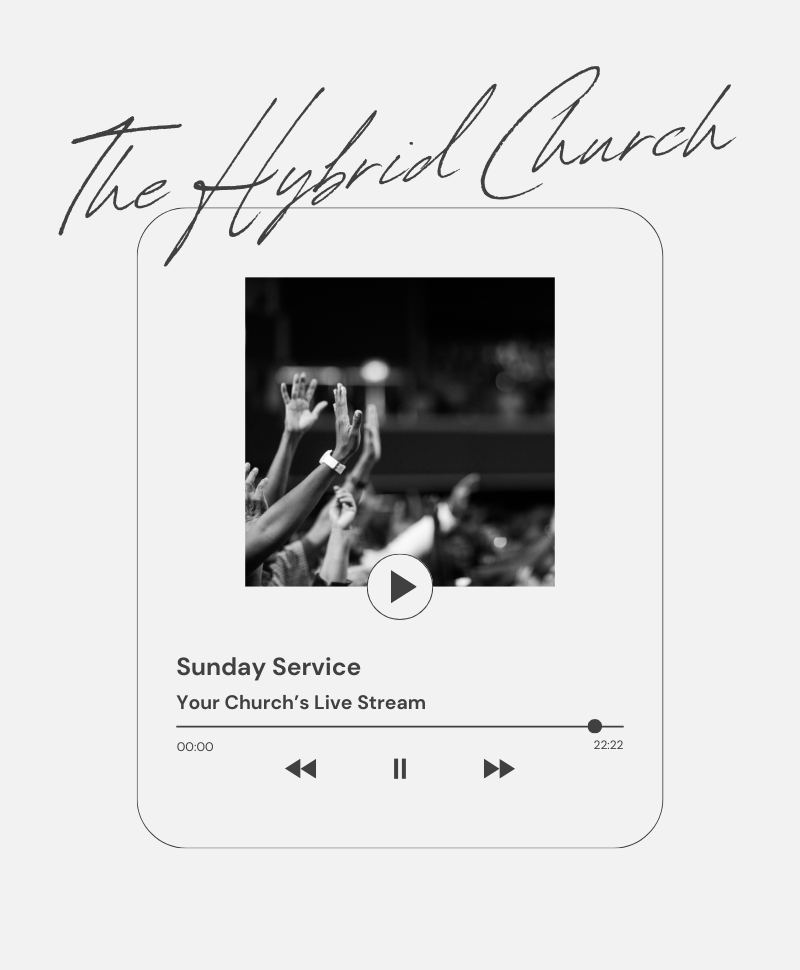Bridging the Gap Between In-Person and Online Church Experiences
The way people engage with church has changed. Some members value the in-person experience—the warmth of a handshake, the communal singing, and the sacredness of the physical church building. Others prefer digital options, tuning into sermons from their homes, engaging in Bible studies via Zoom, or praying through church apps.
Rather than choosing one over the other, the hybrid church model embraces both, ensuring that every member—whether attending in person or engaging online—feels connected, valued, and spiritually nourished. By merging traditional worship with digital tools, churches can expand their reach, increase engagement, and create a faith experience that transcends physical walls.
Why Hybrid Church Matters
Reaches More People | Those unable to attend in person due to illness, travel, or distance can still participate in worship.
Keeps Younger Generations Engaged | Digital tools make faith accessible to tech-savvy members who prefer online interaction.
Honors Tradition While Adapting to the Future | Churches don’t have to abandon physical services; instead, they can enhance them with digital elements.
Encourages Consistent Faith Engagement | Members can stay connected to their church community throughout the week, not just on Sundays.
The goal of a hybrid church model is to bring people together—wherever they are—without making digital and physical worship feel like two separate worlds.
Building a Strong Hybrid Church Model
A successful hybrid church goes beyond just live-streaming services. It creates meaningful engagement for both online and in-person attendees, ensuring that both groups feel equally involved in the church community.
Create a Seamless Worship Experience
For a hybrid model to succeed, online and in-person worship should be integrated, not separate experiences.
Live-Streaming Services: Ensure high-quality video and audio so remote viewers feel immersed in the service.
Interactive Online Elements: Encourage online attendees to engage through chat features, live prayer requests, and digital sermon notes.
On-Screen Engagement for In-Person Worship: Display social media posts, prayer requests, and participation from online viewers on a large screen to create a sense of unity.
Encourage Hybrid Participation: Invite online viewers to share testimonies, ask questions, or even lead virtual small groups.
Pro Tip: Assign a digital pastor or online host to engage with online viewers, answer questions, and provide a welcoming atmosphere in the chat.
Offer Digital Discipleship & Small Groups
Hybrid church isn’t just about Sunday worship—it’s about discipleship throughout the week.
Hybrid Bible Studies: Offer small groups that meet both in-person and via Zoom, so members can choose how they want to participate.
Church App & Devotionals: Provide digital devotionals, sermon notes, and discussion guides to help members stay engaged daily.
On-Demand Sermons & Podcast Teachings: Record and upload sermons so members can listen anytime, anywhere.
Online Prayer Groups: Create a space for prayer requests via an online prayer wall, group chats, or social media.
Pro Tip: Encourage small group leaders to assign digital mentors who can check in with online members and keep them engaged.
Use Social Media & Digital Tools for Community Engagement
Church engagement shouldn’t end after Sunday morning. Use digital tools to foster community all week long:
Facebook Groups & WhatsApp Chats – Keep members connected with daily encouragement and event updates.
Instagram & TikTok Reels – Share short devotionals, worship clips, and testimonies to reach younger generations.
YouTube & Podcasts – Post deeper theological discussions, testimonies, and sermon recaps.
Polls & Q&A Sessions – Use Instagram Stories or Facebook polls to get feedback from members on sermon topics, events, and engagement ideas.
Pro Tip: Encourage every generation to participate by offering digital literacy workshops for older members so they feel comfortable using these tools.
Ensure Hybrid Events & Ministry Opportunities
Church events should be accessible to both in-person and online attendees.
Live-Streamed & Interactive Events: Whether it’s a worship night, guest speaker, or Bible study, ensure there’s an option to join online.
Hybrid Volunteer Opportunities: Let members serve digitally—managing online prayer groups, moderating social media pages, or helping with live-stream production.
Service Projects for All: Offer mission opportunities where both in-person and online members can contribute, such as fundraising campaigns or virtual mentorship programs.
Pro Tip: If hosting a conference or retreat, provide both an in-person and a virtual option so no one misses out.
Embracing the Future of Worship
A hybrid church model isn’t about replacing traditional worship—it’s about enhancing it. By combining in-person gatherings with digital tools, churches can reach more people, foster deeper engagement, and create a stronger, more connected faith community.


